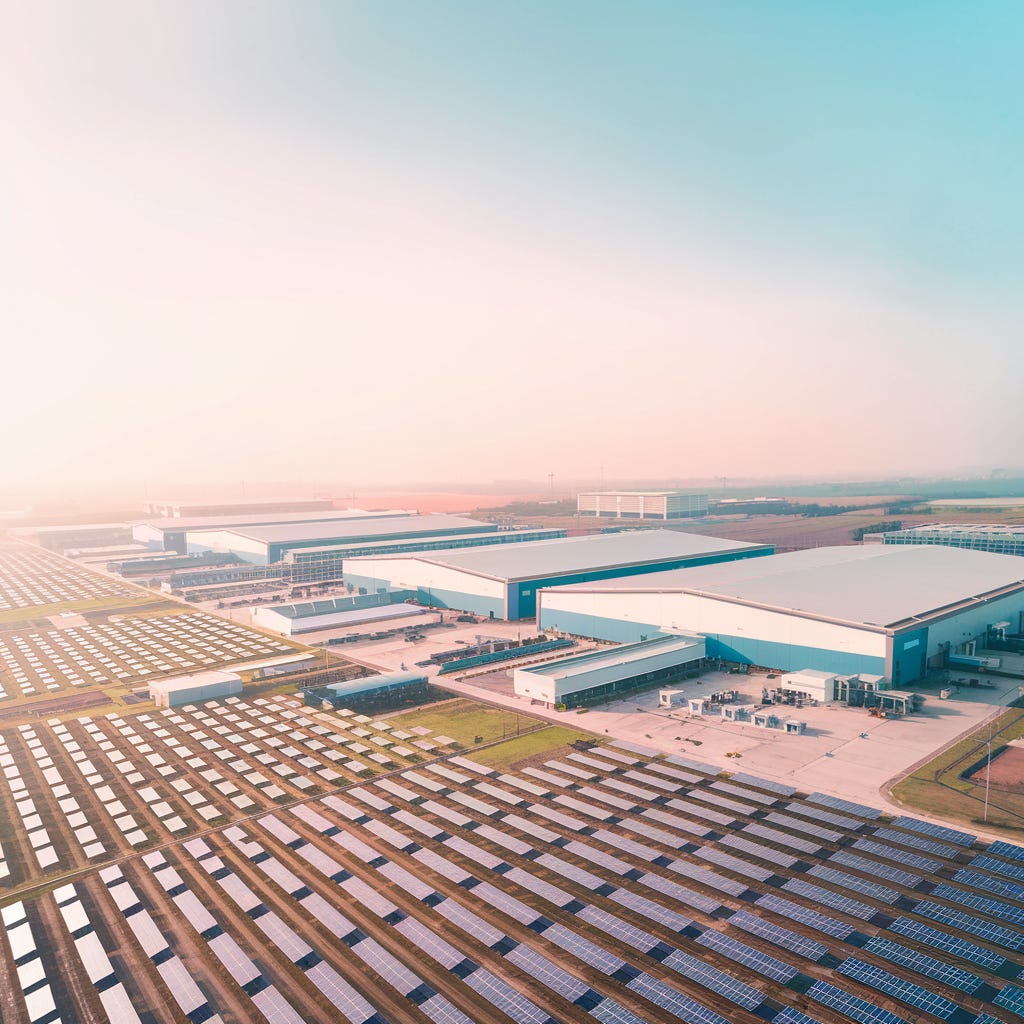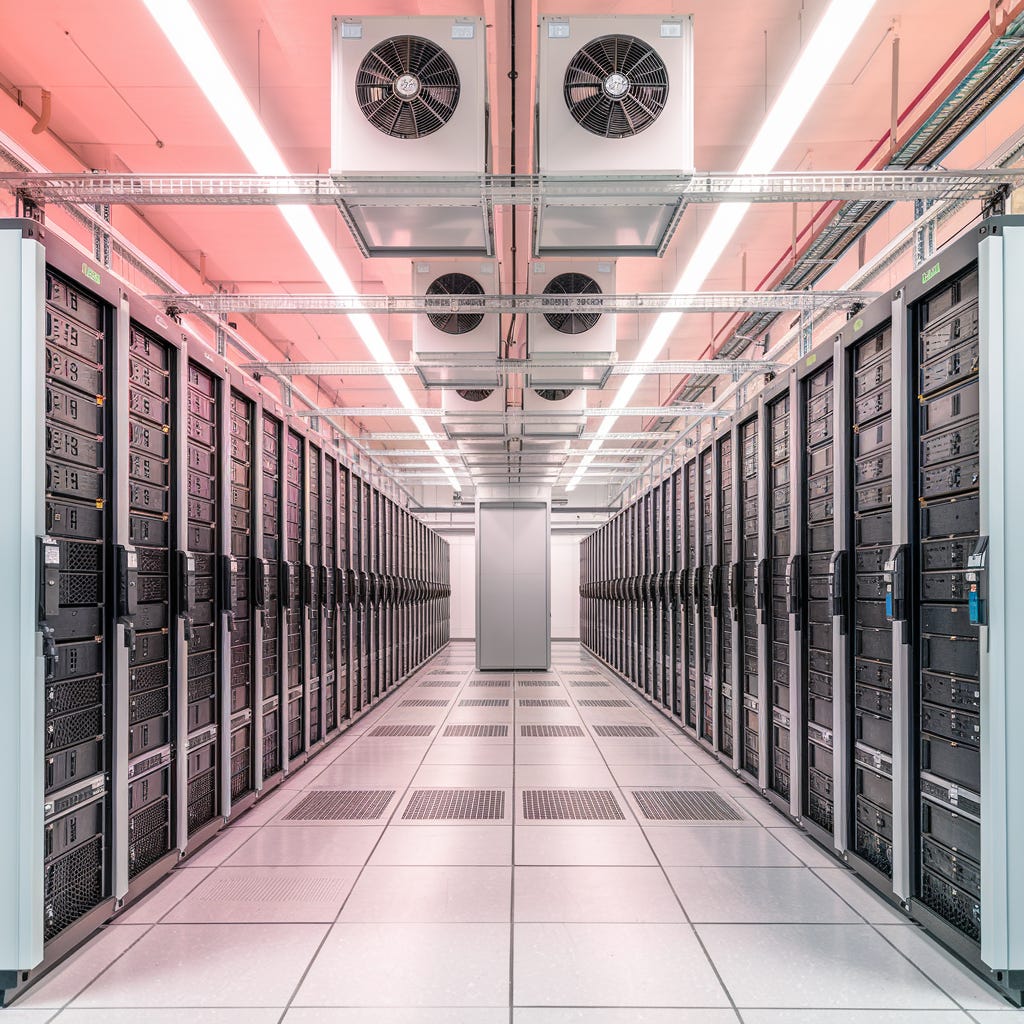How Will AI Reshape Data Center Investments, and Should Investors Bet on REITs or Direct Ownership?
Welcome to Global Data Center Hub. Join 800+ investors, operators, and innovators reading to stay ahead of the latest trends in the data center sector in developed and emerging markets globally.
The AI Revolution and Its Impact on Data Center Investments
The rise of artificial intelligence workloads has fundamentally altered data center investment dynamics.
AI implementations require 10 times more power per rack than traditional cloud operations, according to the Uptime Institute.
This shift creates new considerations for investors weighing data center real estate investment trusts (REITs) against direct facility ownership.
This analysis examines how AI infrastructure demands influence the choice between these investment approaches.
The AI-Driven Transformation of Data Centers
Power consumption patterns have shifted dramatically with AI adoption.
Traditional cloud computing racks operate at 5-10 kilowatts, while AI workloads demand 50+ kilowatts per rack, driving adoption of advanced cooling solutions for high-performance chips.
The International Energy Agency projects data center power requirements will double by 2030.
This growth shapes distinct regional patterns. North America leads development through Northern Virginia's Data Center Alley, though power constraints drive expansion to secondary markets like Phoenix and Dallas.
European FLAP-D markets (Frankfurt, London, Amsterdam, Paris, Dublin) balance robust infrastructure with strict data sovereignty requirements. Asia-Pacific presents contrasts, from Singapore's strict construction limits to Australia's renewable energy advantages.
Emerging markets offer unique opportunities. The U.S. Midwest and Nordic countries leverage abundant power and natural cooling advantages. Middle Eastern markets utilize solar resources and strategic positioning, while South American regions develop through renewable energy projects and improved connectivity.
Environmental considerations increasingly influence development. Renewable energy integration and ESG compliance prove essential for maintaining asset value and attracting major tenants. Energy efficiency innovations, from immersion cooling to AI-optimized workloads, support long-term viability.
The Case for Data Center REITs: A Liquid, Scalable Investment Approach
Major data center REITs actively position themselves for AI growth. Equinix (EQIX) expands its liquid cooling infrastructure while focusing on interconnection hubs. Digital Realty (DLR) acquires AI-ready facilities. Iron Mountain (IRM) shifts toward AI colocation with sustainability-focused investments.
The advantages of REIT investment present compelling opportunities for AI data center exposure.
Liquidity stands as a primary benefit, allowing investors to enter and exit positions readily without the long-term commitments required for direct facility ownership.
Portfolio diversification across multiple markets and tenant types effectively reduces concentration risk. The passive income structure generates reliable cash flow through long-term leases with hyperscale and enterprise customers.
Professional management teams bring specialized expertise in site selection, leasing negotiations, and infrastructure upgrades, eliminating the need for direct operational involvement.
REITs also provide immediate market access without large capital requirements. Their established relationships with major tenants and developers facilitate faster deployment of AI infrastructure.
The public market structure offers transparency in valuation and performance metrics. Investors gain exposure to multiple AI growth markets through a single investment vehicle. REITs' scale allows them to negotiate favorable terms with suppliers and contractors while spreading fixed costs across larger portfolios.
However, REIT investments face distinct limitations and challenges.
The most significant constraint is lack of control - shareholders cannot direct asset-level decisions about facility upgrades, tenant selection, or lease terms. Technical limitations arise as some REIT portfolios lack sufficient power density and cooling capacity for advanced AI workloads.
Financial factors introduce additional risk, as REIT valuations remain highly sensitive to interest rate changes and broader economic conditions. The standardized approach to facility design may not accommodate custom requirements for specialized AI deployments. Public market volatility can impact share prices independently of underlying asset performance.
The Case for Direct Data Center Investment: Control, Customization, and High-Value Growth
Private investors make substantial commitments to AI infrastructure.
Blackstone's $16 billion AirTrunk acquisition established dominance in Asia-Pacific AI data centers. DigitalBridge manages a significant portfolio of digital infrastructure assets, including strategic investments in data centers supporting AI capabilities globally.
Direct ownership provides distinct strategic advantages in the AI infrastructure market.
Complete operational control enables rapid adaptation to evolving AI computing requirements through customized facility designs and specialized cooling systems. Strategic tenant relationships allow direct negotiations with hyperscale providers, leading to optimized lease structures and long-term partnerships.
Value creation opportunities extend beyond rental income through facility upgrades, expansion potential, and strategic positioning in high-demand markets. Tax considerations include accelerated depreciation on equipment and infrastructure, potential regional incentives for renewable energy adoption, and possible location-based tax benefits where available.
Direct investment also offers competitive advantages in securing prime locations and power resources. Owners can design and build facilities specifically for high-density AI computing requirements. The ability to control power sourcing and infrastructure development supports long-term cost optimization.
Direct owners maintain flexibility to upgrade facilities as AI technology evolves, ensuring continued relevance in a rapidly changing market. The potential for higher returns through both operational income and asset appreciation attracts investors seeking maximum value capture.
However, direct investment demands substantial resources and expertise.
Capital requirements present a significant barrier, with development costs exceeding $10 million per megawatt of capacity. Complex regulatory compliance spans multiple jurisdictions, covering zoning laws, environmental mandates, and power procurement agreements.
Operational success requires deep expertise in infrastructure management, cooling innovation, and high-density power solutions. Market risk concentrates in specific assets and locations without portfolio diversification.
The long-term commitment of capital reduces investment flexibility compared to REIT alternatives. Direct owners must also maintain internal teams for facility management, tenant relations, and technical operations.
Key Considerations for Investors: REITs vs. Direct Ownership
Your investment timeline influences the optimal approach.
Short-term investors prioritizing liquidity and regular income align with REITs. Long-term investors seeking asset control and appreciation potential benefit from direct ownership.
Risk tolerance shapes strategy selection.
Passive investors gain broad market exposure through REITs with minimal operational involvement. Active investors control power access, land acquisition, and tenant relationships through direct ownership.
AI readiness varies between options.
REITs offer quick market entry but may lag in high-density facility upgrades. Direct owners secure premium locations but need substantial operational capabilities. Some investors combine REIT allocation with selective direct investments to balance control and risk management.
The Future of AI Data Center Investment — Where Should Investors Go?
Regional market dynamics create distinct investment opportunities.
Mature markets offer stability and proven demand but face power and expansion constraints. Northern Virginia exemplifies this challenge, where limited power capacity drives premium valuations for AI-ready facilities. Similar dynamics in Singapore and Amsterdam create opportunities in neighboring regions.
Emerging markets present different risk-reward profiles.
U.S. Midwest locations offer lower entry costs and abundant power but require infrastructure investment. Nordic markets combine ideal environmental conditions with renewable energy but need enhanced connectivity. Middle Eastern locations leverage government support and strategic positioning but face political considerations.
These regional variations affect REIT and direct investment strategies differently.
REITs typically focus on established markets where tenant demand supports consistent returns. Their diversified portfolios can include selective emerging market exposure while maintaining stable income streams. Direct investors often find greater opportunities in emerging markets, where early positioning and infrastructure investment generate higher potential returns.
Your investment approach should align with regional market dynamics.
Consider power availability, regulatory environment, and connectivity requirements in each location. Established markets offer immediate AI deployment capabilities but command premium prices. Emerging markets require longer development timelines but provide greater value appreciation potential.
Both REITs and direct ownership offer viable paths to AI infrastructure investment, with distinct advantages based on regional focus and risk tolerance. Success requires understanding how geographic factors influence facility development, tenant demand, and long-term value creation.
IF YOU ENJOYED THIS ARTICLE AND WANT MORE CONTENT LIKE THIS:
Subscribe to this newsletter to get notified when a new issue comes out (bi-weekly).
You can also connect with Obinna Isiadinso on Linkedin, Twitter, and YouTube.
One More Thing
I publish daily on data center investing, AI infrastructure, and the trends reshaping global data center markets.
Join 800+ readers and get the next insight in your inbox.
Want to go deeper?
Upgrade to get access to private content — where I share exclusive frameworks, premium insights, and real-world tools for data center investing and AI infrastructure.
When you subscribe, you’ll unlock guides and insights like:
Data Center Power Infrastructure: The Foundation of AI Computing Performance
Hyperscale vs. Colocation: Strategic Portfolio Considerations for Data Center Investors
Data Center Design Evolution: Strategic Implications for Infrastructure Investors
What Forward-Thinking Data Center Operators Know About Emerging Tech That Others Are Missing
Issue #8: Nvidia’s 600kW Racks Are Here (Is Your Infrastructure Ready?)
Issue #7: CoreWeave’s $11.9 Billion OpenAI Deal - The Future of AI Compute is Taking Shape




